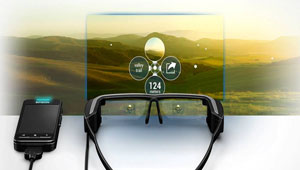 Drone images transferred in real time to rescue workers on the ground
Drone images transferred in real time to rescue workers on the ground
At the end of May 2014, Epson and the National Institute of Information and Communications Technology (NICT), an independent organization, conducted tests in the city of Sakaide in Kagawa Prefecture, Japan, to explore the feasibility of a new post-disaster rapid-response system that combines the partners' respective cutting-edge technologies.
Epson provided its Moverio BT-200 smart glasses for the project. Worn like an ordinary pair of glasses, Moverio smart glasses display content on a "floating" perceived big-screen. They free up your hands and project images that you can see through, which means that digital information can be layered on top of images in the real world. You can also use the Moverio together with a mirroring adapter to transmit video and audio to the headset wirelessly.
The NICT provided a system for linking Kizuna, a super high-speed Internet satellite, with unmanned aircraft systems (drones) to enable wireless communications during disasters. This system would allow images taken by a drone flying above regions devastated by disasters to be transmitted in real time via satellite.

For this test, Epson and the NICT combined their technology to build a disaster response system such as that depicted below.
The proposed system would use a drone to film or photograph a disaster site. Information about filmed or photographed locations would be sent virtually in real time using the NICT's wireless technology to a disaster relief taskforce on the ground or to the disaster site. This data would then be retransmitted to a Moverio BT-200 from a wireless mirroring adapter. On-the-ground rescue workers equipped with Moverio smart glasses would be able to observe their surroundings while also receiving aerial images displayed on the Moverio screen, thus enabling them to rapidly make the right decisions in emergencies. The test that was conducted demonstrated that the system delivers information as planned.
Epson and the NICT also tested a new method of operating a drone by remote control using Moverio smart glasses. Ordinarily, drones are operated using a special controller. The problem with these controllers is that you have to constantly be shifting your gaze to the controller screen and away from the drone. A drone operator wearing smart glasses, however, can see a semi-transparent controller screen projected in his field of vision that he can operate without losing sight of the drone as it flies through the air. Epson and the NICT are aligned in their desire to realize a practical system in the future and, toward that end, plan to engage in further testing and development.
www.epson.com



















































































